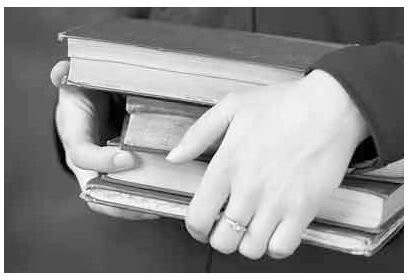Publishing Style: A Guide for Book Authors
Considerations in Writing
**
The Basic Plan
You have the scope, plan and purpose of your book well in mind. It is not a bad idea to prepare two to three paragraphs stating these objectives. This type of descriptive matter can be used in marketing, book jackets and even as a starting point for writing, as in the Introduction. There’s an old adage: tell the reader what you’re going to tell them, then tell them, then tell them what you’ve told them to finish. I hope your writing is not so apparently redundant, but this kind of manuscript style helps to keep the organization of material in check. So think about how you will introduce your reader to the topic, summarize what the book covers, select main topics and then fill in the details.
Titles
The title is paramount toward selling your book. Publishing style dictates the tone but the title must still be precise, yet descriptive and even clever. Imaginative titles that pique the reader’s curiosity are key, and remember that some booklists omit the subtitle so the main title should be sufficient enough to describe the contents. Pay particular attention to titles in the Table of Contents for they must be the same style, and parallel in nature and in length.
Manuscript Format

Nonfiction books generally have similar elements. Your publishing house should provide you with their manuscript style guide. We will talk about the basic essentials here, but if you don’t know how to prepare them, you might ask before you begin. Most books have these preliminary elements: Copyright page, About the Author page, Dedication, Acknowledgements, a Preface or Foreword (note the spelling), an Introduction, Table of Contents, chapter titles, chapters, Appendices, Footnotes and Endnotes, and Index. It may also have a Glossary to define technical terms, a list of cases (such as with law cases) and Illustrations and Examples.
Copyright page: supplied by the publisher with year of publication, house address and essentials, Library of Congress materials, copyright notice, etc.
About the Author: a short autobiographical sketch, often appearing on the left facing the title page, usually for technical books or ones with specialized knowledge.
Dedication: usually a note dedicating the book to a loved one.
Acknowledgements: official public recognition for the help someone has given the work.
Preface: an introductory section that comments on the aspects of the text or the writer’s intentions.
Foreword: an introductory note or essay often written by somebody other than the author—a colleague, about indirect sponsorship of the work, thanking the author for making the contribution to the body of knowledge.
Preface: the author talks about the book and acknowledges any assistance he had in its preparation.
Introduction: an enticement leading the reader into the text material.
Table of Contents (TOC) or Contents: chapter titles leading the reader through the book; helps to establish the order of the book.
Chapter Titles: descriptive banners for chapter contents. They should be similar in slant and parallel in construction.
Appendices or Appendix: a collection of separate material at the end of a book; could contain a Bibliography (a list of books used as reference), tables of information, statistical facts—it can also contain author’s note, resources, anything pertinent but not in the text.
Footnotes and Endnotes: items used to clarify, qualify or expand upon points made in the text, sometimes called explanatory footnotes or endnotes, or annotated footnotes. Make sure you know the publishing house’s required style for numbers and how they should be incorporated into the text.
Index: the value of an index is immeasurable. With complicated subject matter it is a necessity. Often purchasers of textbooks base their decisions on the breadth of the index. An index to me is a form of thinking backward when created, and uses key words, as well as a list of modifiers to put it into perspective that point the reader to the correct page(s) for information.
Stylistic Decisions

House publishing style is used in other instances as well. For example, text references, sidebars, literary citations and how to express numbers and abbreviations are common in publication; the use of tables, legends, captions and other graphics, another concern. An author needs to get permission for copyrighted materials, know how to use bias-free writing, and understand the methodology of working with galley proofs. The stylistic use of italics, underline, and indents or bullets cannot be ignored either. All these elements must be reflected in your manuscript style.
We will briefly run over some of the specifics of manuscript style.
Text references: if you wish to refer the reader to other parts of the ms., what is your method? For example: (see “Harassment” in Ch. 7).
Literary citations: references to cited works whether they are periodicals (magazines), books, or published papers are needed. For example: Smith, John D., and Strum, R. E.: Symptoms that persist after cholera. JAMA, 105: 1093, 1935. This entry consists of the author’s name, title of article, name of periodical, volume number, page number and year of publication.
Numbers and abbreviations: for instance, does the publishing style ask for, per cent or percent? How to describe centrigrade or Fahrenheit; when to use AM, PM or a.m. or p.m.; whether to spell out numbers?
Tables and Legends for photographs: legends for illustrations are often furnished separately and identified by the word Figure; so at some point in the text you will write: Insert Figure and the appropriate number.
Permissions: it is the author’s responsibility to obtain all permissions and releases in conjunction with his work and not merely to safeguard legal interests, but to use copyrighted materials responsibly. The author should find out what constitutes “fair use” and how the publisher feels about paraphrasing. “Permission to use” is always required for illustrations, charts, graphs and tables from a copyrighted work.
Bias-free writing: Men and women should be treated as individuals. You want to maintain a fair representation of minority groups and disabled (or handicapped) persons by using proper pronouns, nonsexist writing and avoiding stereotypes.
Manuscript corrections, proofs and styles: it also must be made clear how to “proof” the galleys. Standard proofreaders’ marks used to be applied to manuscripts with red pencil. Today it is no less important to correct various drafts of prepublished materials for errors whether using paper (unlikely) or computer-generated editing programs.
Taking these publishing style and manuscript style issues one by one will eliminate a lot of the problems or corrections an author will have to complete during the edit phases. Good luck!
Reference & Resource
Hodges, John C. et al. Harbrace College Handbook. Harcourt Brace College Publishers, 1994.
Raimes, Ann. Keys for Writers. Houghton Mifflin Company, 1996.
Photos by Clipart.com
This post is part of the series: Book Publishing Series
What is the difference between a publisher and an editor? How many editors are there? Do you know the terminology and lingo inherent in book publishing? This series of articles answers these questions and more—what every aspiring author should know about a typical New York book publishing house.
